
The OpenSTEM® materials are ideally suited to online teaching. In these times of new challenges and requirements, there are a lot of technological possibilities. Schools and teachers are increasingly being asked to deliver material online to students. Our materials can assist with that process, especially for Humanities and Science subjects from Prep/Kindy/Foundation to Year 6. We also have some resources for a few high school subjects.
Fully aligned to the Australian curriculum, we have hundreds of resource PDFs. Teachers have used these for literacy practise in English, as well as resources for the Humanities and Science curriculum. They have even been used for NAPLAN preparation!
Full units available
We also have full lesson kits – divided into four units per year level (one for each term). These comprise a teacher’s handbook with complete lesson plans for each lesson; a student’s workbook which takes each student through all the requirements of each lesson, complete with assessment; a curriculum plan which indicates which curriculum items are being addressed in the unit and a complete assessment guide with criteria sheet, to match curriculum strands. Our use of continuous assessment, provides both formative and summative assessment points and means that there is no need to arrange proctoring of an exam in order to gain a full assessment. The assessment guide can be used to populate the report, if needed, each term.
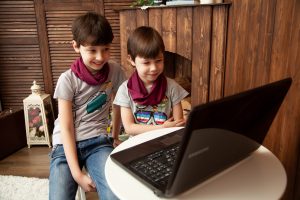
The units make use of the PDF resources. These can be distributed with the student workbooks, to each student, via email. The entire unit can be undertaken without the need for a virtual classroom if required, with the support of a parent or home tutor, and phone calls to the teacher as required. Students could email back a scan of the completed student workbook, and any additional material they have written. The teacher could also deliver video presentations, which students could download, and students could upload videos or audio recordings of themselves delivering their material.
The units can also be used within a virtual classroom setting, or via a video conference link, with the teacher discussing the unit and requirements with students and then sending them off to work through their workbooks. Students could present finished bodies of work online in later session. The OpenSTEM® units could be undertaken with just one such online session a week, again assuming some input from a parent or person at home with the child, given that we are talking primary school children.
Some of our more extensive units (such as our Ginger Beer unit) address more than just Humanities and Science, covering Maths, Business and Economics and English curriculum items as well. These would need the active participation of a parent to assist the child at home and we would recommend arranging a call with us to deliver the initial stages of the project.
Virtual Classrooms vs Video Conferencing
So what is a virtual classroom and how does it differ from video conferencing?

We are all familiar with video conferencing programs such as Skype. These are growing more sophisticated and now include the capacity for screen sharing, type chat boxes and other tools to make having an online meeting or conversation easier.
Virtual classrooms (like BigBlueButton) are different because they have tools specifically for replicating classroom activities. As well as video and text chat, one can show a presentation, image or other document in the centre of the screen. The teacher or students (subject to permissions decided by the teacher), can write on pages of the presentation. So teachers can annotate slides, students can answer questions etc. Students can also be assigned into groups (anything from one to any size) and placed into “break-out” rooms, where they get their own copy of the presentation/document. Thus students can answer questions either individually or in groups, or discuss a topic, just as they would in class. The teacher can move between the groups to monitor activity. Break out rooms can be ended by the teacher after a set time, or at any time.
Timers can be used in the main room, e.g. to give students 10 minutes to write notes/answers. Or to allow the break out rooms to exist for only a certain length of time. Students are then returned to the main room to share what they discussed. Students can also chat in a side bar, to answer questions, or use an icon to “raise a hand” if they wish to ask something. Students can either type to reply or the teacher can allow them to contribute verbally by activating their microphone permissions.
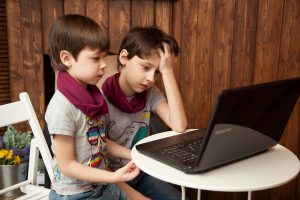
Teachers have a lot of control in a virtual classroom. Trouble makers can have their permissions revoked and be silenced immediately. They can also be segregated to a room on their own, but still see the lesson material. Without an audience to play to, most behaviour settles quickly.
Email us for assistance if you want to know more about virtual classrooms.
You’re Not Alone!
Remember, there are a lot of people out there who have walked these paths below. We can assist you with resources, units, assessment, advice on virtual classrooms and many other aspects of online learning, including what works and what doesn’t. There are many other online communities that can also assist. Do reach out and let’s support each other through these trying times.


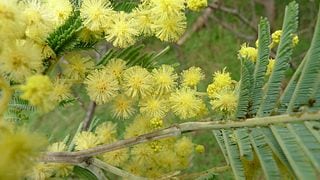
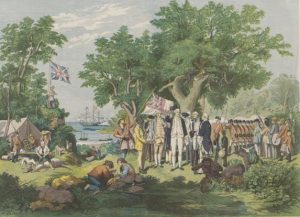 Not strictly speaking within this week, but close enough to be included: it was 22 August, 1770, when James
Not strictly speaking within this week, but close enough to be included: it was 22 August, 1770, when James 
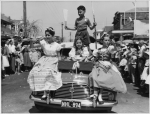 6th June: This year Wednesday 6 June was marked by the opening match of the annual State of Origin rugby league series between the NSW Blues and the Qld Maroons. Whilst rugby league has its own fascinating
6th June: This year Wednesday 6 June was marked by the opening match of the annual State of Origin rugby league series between the NSW Blues and the Qld Maroons. Whilst rugby league has its own fascinating 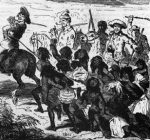 10th June: A more tragic event in Australian history is the
10th June: A more tragic event in Australian history is the 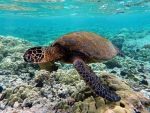 11th June: On this day in 1770,
11th June: On this day in 1770, 
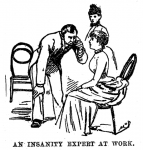 She was born 154 years ago in a part of Pittsburgh, USA, named after her father, Michael Cochran, who had worked his way up from being a labourer to a major landowner, postmaster and respected justice. A passionate advocate for women’s rights from the age of 16, her eloquence landed her a job as a writer for the local newspaper. At the age of 21, she served as a foreign correspondent in Mexico, later publishing her experiences in a book. She was forced to flee Mexico after criticising the Mexican government for imprisoning a local journalist.
She was born 154 years ago in a part of Pittsburgh, USA, named after her father, Michael Cochran, who had worked his way up from being a labourer to a major landowner, postmaster and respected justice. A passionate advocate for women’s rights from the age of 16, her eloquence landed her a job as a writer for the local newspaper. At the age of 21, she served as a foreign correspondent in Mexico, later publishing her experiences in a book. She was forced to flee Mexico after criticising the Mexican government for imprisoning a local journalist. Nellie’s next exploit was to attempt to match the journey from Jules Verne’s novel “Around the World in 80 Days”. The attempt became a race with a rival newspaper fielding another candidate, travelling in the opposite direction. As in the novel, using steamships and railways, Bly started on 14 November, 1889 and travelled through England, France (where she met Jules Verne), Italy, Egypt, Sri Lanka, Penang, Singapore, Hong Kong and Japan (as well as a visit to a leper colony in China). She sent short updates on her progress by telegraph from most places, now connected by submarine cables for the new electric telegraph network. She returned victorious to New York a mere 72 days later, on 25 January, 1890, also beating her rival by 4 1/2 days. Her success inspired a board game, no doubt helping 19th century children with their Geography knowledge!
Nellie’s next exploit was to attempt to match the journey from Jules Verne’s novel “Around the World in 80 Days”. The attempt became a race with a rival newspaper fielding another candidate, travelling in the opposite direction. As in the novel, using steamships and railways, Bly started on 14 November, 1889 and travelled through England, France (where she met Jules Verne), Italy, Egypt, Sri Lanka, Penang, Singapore, Hong Kong and Japan (as well as a visit to a leper colony in China). She sent short updates on her progress by telegraph from most places, now connected by submarine cables for the new electric telegraph network. She returned victorious to New York a mere 72 days later, on 25 January, 1890, also beating her rival by 4 1/2 days. Her success inspired a board game, no doubt helping 19th century children with their Geography knowledge!
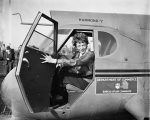 Let’s quickly recap the mystery surrounding Amelia Earhart:
Let’s quickly recap the mystery surrounding Amelia Earhart:
My 9 year old son fell in love with all the aspects of this little robotic guy - the simple…
Cara, Parent